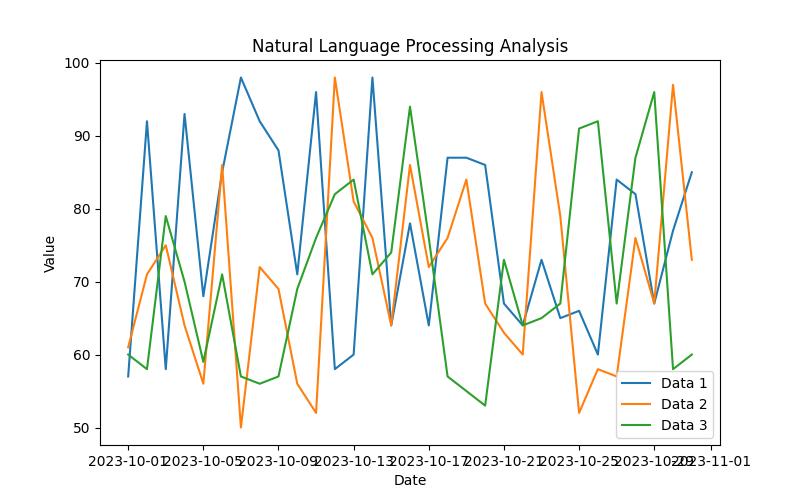What readers will learn from this article:
- The main features and goals of Google Hummingbird.
- The importance of natural language processing and user intent in search results.
- How to optimize for mobile-friendly search results, voice search, and featured snippets.
I. Importance of search engine algorithms and their impact on search results
In today’s digital age, search engines play a crucial role in our daily lives. Whether we’re looking for information, products, or services, search engines like Google have become our go-to resource. But have you ever wondered how search engines determine which websites to show in their search results? This is where search engine algorithms come into play.
Search engine algorithms are complex mathematical formulas that analyze various factors to determine the relevance and quality of websites. These algorithms take into account factors such as website content, backlinks, user experience, and many others to provide the most accurate and helpful search results.
The impact of search engine algorithms on search results cannot be understated. Websites that rank higher in search results are more likely to receive organic traffic, which can lead to increased visibility, brand recognition, and ultimately, more conversions and revenue. Therefore, understanding and optimizing for search engine algorithms is crucial for businesses looking to succeed online.
II. Introduction to Google Hummingbird as a major update to Google’s search algorithm
One of the most significant updates to Google’s search algorithm is known as Google Hummingbird. Launched in 2013, Hummingbird aimed to revolutionize the way Google understood and processed search queries. Unlike previous algorithm updates that focused primarily on specific aspects of search, Hummingbird introduced a more comprehensive approach to search engine optimization (SEO).
III. Significance of understanding Hummingbird for search engine optimization (SEO) purposes
As an entrepreneur or business owner, it is essential to understand the impact of Google Hummingbird on SEO. By understanding the core concepts and features of Hummingbird, you can optimize your website and content to align with its requirements, ultimately improving your search engine rankings and driving more organic traffic to your site.

1. Understanding Google Hummingbird
Explanation of the Google Hummingbird update and its main features
Google Hummingbird was designed to enhance the search experience by providing more accurate and relevant search results. Unlike previous updates that focused on specific aspects, Hummingbird aimed to provide a more comprehensive understanding of users’ search queries. It achieved this by incorporating natural language processing (NLP) and semantic search into its algorithm.
Comparison with previous algorithm updates
Hummingbird differed significantly from previous algorithm updates like Panda and Penguin, which primarily focused on penalizing websites with low-quality content or manipulative link-building practices. While those updates were crucial in combating spam, Hummingbird focused on improving the overall search experience by understanding user intent and context.
Primary goal: providing more accurate and relevant search results
The primary goal of Hummingbird was to provide users with more accurate and relevant search results. By understanding the context and intent behind each search query, Hummingbird aimed to deliver more personalized and helpful results. This shift from keyword-based searches to semantic search allowed Google to understand the meaning behind each query, leading to more precise results.

2. Natural Language Processing in Hummingbird
Incorporation of natural language processing (NLP) to understand search queries better
One of the key features of Google Hummingbird is the incorporation of natural language processing (NLP) technology. NLP enables Google to understand search queries in a more human-like manner, taking into account the context, semantics, and intent behind each query. This allows Google to provide more accurate and relevant search results.
Shift from keyword-based searches to semantic search
With the introduction of Hummingbird, Google shifted its focus from keyword-based searches to semantic search. Semantic search aims to understand the meaning behind search queries and provide results that match the user’s intent, rather than just matching specific keywords. This shift has made it crucial for businesses to create content that aligns with user intent, rather than simply stuffing keywords into their website.
Importance of conversational search and its impact on user experience
Another significant aspect of Hummingbird is its emphasis on conversational search. With the rising popularity of voice search, Hummingbird aims to understand and process natural language queries, just as a human would. This has had a profound impact on user experience, allowing users to ask questions or make requests in a more conversational manner and receive accurate and relevant results.

3. Contextual Understanding and User Intent
Focus of Hummingbird on context and user intent rather than solely relying on keywords
Hummingbird’s focus on context and user intent is a game-changer in the world of SEO. Instead of solely relying on keywords, Hummingbird aims to understand the context behind each search query. This means that businesses need to create content that not only includes relevant keywords but also provides valuable information that aligns with the user’s intent.
How this algorithm update helps Google provide more accurate and personalized search results
By understanding the context and intent behind each search query, Hummingbird allows Google to provide more accurate and personalized search results. This means that businesses that create content with a deep understanding of their target audience’s needs and desires have a higher chance of ranking higher in search results.
Importance of creating content that aligns with user intent
To succeed in the age of Hummingbird, businesses must create content that aligns with user intent. This means going beyond keyword optimization and focusing on creating valuable and informative content that directly addresses the needs and questions of their target audience. By understanding the context and intent behind each search query, businesses can create content that satisfies the user’s needs and increases the chances of ranking higher in search results.

4. Mobile-Friendly Search Results and Mobile-First Indexing
Emphasis of Hummingbird on mobile-friendly websites
With the increasing use of mobile devices for search and browsing, Hummingbird places a strong emphasis on mobile-friendly websites. Mobile-friendliness has become a crucial factor in search engine rankings, as Google aims to provide the best possible user experience across all devices. Websites that are not optimized for mobile devices may see a significant drop in their search rankings.
Introduction to mobile-first indexing and its impact on search rankings
In addition to mobile-friendliness, Hummingbird introduced the concept of mobile-first indexing. Mobile-first indexing means that Google primarily uses the mobile version of a website’s content for indexing and ranking purposes. This means that businesses need to ensure that their websites are optimized for mobile devices to improve their visibility in search results.
Importance of optimizing websites for mobile devices to improve visibility in search results
Optimizing websites for mobile devices is crucial to improve their visibility in search results. With mobile devices becoming the primary means of accessing the internet, businesses that neglect mobile optimization may miss out on a significant portion of potential organic traffic. By ensuring that your website is mobile-friendly and optimized for mobile-first indexing, you can improve your search rankings and reach a wider audience.
5. Long-Tail Keywords, Voice Search, and Hummingbird
Rise of voice search and its correlation with Hummingbird
Voice search has experienced a significant rise in popularity in recent years, thanks to advancements in technology and the convenience it offers. Hummingbird is closely correlated with voice search, as it aims to understand natural language queries and provide accurate results. This means that businesses need to adapt their SEO strategies to optimize for voice search, which often involves targeting long-tail keywords and creating conversational content.
Effect of the update on the usage of long-tail keywords in SEO
With Hummingbird’s focus on understanding user intent and context, the usage of long-tail keywords in SEO has become even more important. Long-tail keywords are specific, highly targeted phrases that capture the intent of a user’s search query. By incorporating long-tail keywords into your content, you increase the chances of ranking higher in search results and attracting more relevant organic traffic.
Tips on optimizing content for voice search and long-tail keywords to improve visibility
To optimize your content for voice search and long-tail keywords, consider the following tips:
- Understand user intent: Research and analyze the intent behind your target audience’s search queries. What questions are they likely to ask? What problems are they trying to solve? By understanding their intent, you can create content that directly addresses their needs.
- Incorporate long-tail keywords: Identify long-tail keywords that are relevant to your content and audience. These keywords should reflect the specific queries and phrases that your target audience is likely to use when searching for information. Incorporate these keywords naturally into your content to improve its visibility in search results.
- Create conversational content: With voice search becoming more prevalent, it’s important to create content that sounds natural when read aloud. Write in a conversational tone and structure your content in a way that answers common questions or provides solutions to problems. This will help your content rank higher for voice searches and long-tail keywords.

6. Featured Snippets, Knowledge Graph, and Hummingbird
Explanation of how Hummingbird powers featured snippets and the Knowledge Graph
Hummingbird plays a crucial role in powering two important features of Google’s search results: featured snippets and the Knowledge Graph. Featured snippets are concise answers or summaries that appear at the top of search results, providing users with quick and relevant information. The Knowledge Graph, on the other hand, provides detailed information about specific entities or topics, displayed on the right-hand side of search results.
Importance of structured data and schema markup for appearing in featured snippets
To increase the chances of appearing in featured snippets, it is essential to utilize structured data and schema markup. Structured data provides search engines with additional context about your content, helping them understand its relevance and format. By implementing schema markup, you can provide search engines with specific information about your content, making it more likely to be featured in search results.
Tips on optimizing content to increase the chances of being featured in Google’s Knowledge Graph
To optimize your content for the Knowledge Graph, consider the following tips:
- Focus on providing valuable information: The Knowledge Graph aims to provide users with detailed and accurate information about specific topics. To increase the chances of being included in the Knowledge Graph, ensure that your content is informative, well-researched, and provides value to your target audience.
- Implement structured data and schema markup: Structured data and schema markup provide search engines with additional context about your content. Implementing structured data that aligns with the type of information you provide can increase the likelihood of being featured in the Knowledge Graph.
- Optimize for entity-based queries: The Knowledge Graph primarily focuses on providing information about specific entities or topics. Optimize your content to align with entity-based queries by including relevant information about entities, using structured data, and providing detailed and comprehensive coverage of the topic.
7. User Experience, Website Performance, and Hummingbird
Consideration of user experience signals by Hummingbird, such as page load speed and mobile responsiveness
Case Study: How Sarah Optimized Her Website for Google Hummingbird
Sarah is a small business owner who runs an online boutique selling handmade jewelry. She noticed a decline in website traffic and sales after the Google Hummingbird update and realized the importance of understanding and adapting to this algorithm change.
Background
Sarah’s website was previously optimized for traditional keyword-based searches. However, with Hummingbird’s emphasis on natural language processing and user intent, she knew she had to make some changes to improve her search rankings and attract more potential customers.
Adapting to Semantic Search
Sarah started by incorporating semantic search into her SEO strategy. Instead of solely focusing on individual keywords, she began to create content that was more conversational and aligned with how her target audience would search for her products. She optimized her product descriptions to include long-tail keywords and phrases that reflected the natural language her customers would use.
Embracing Mobile-Friendliness
Knowing that Hummingbird also prioritized mobile-friendly websites, Sarah made sure her online boutique was optimized for mobile devices. She worked with a web developer to ensure that her website was responsive, fast-loading, and easy to navigate on smartphones and tablets. This not only improved her search rankings but also enhanced the overall user experience for her mobile visitors.
Harnessing the Power of Featured Snippets
Sarah understood that Hummingbird played a significant role in powering featured snippets and the Knowledge Graph. She implemented structured data and schema markup on her website to increase her chances of appearing in featured snippets, which helped her gain more visibility and credibility in search results.
Results
After implementing these strategies, Sarah saw a significant improvement in her website’s performance. Her search rankings began to climb, and she noticed an increase in organic traffic and sales. By adapting to Google Hummingbird and optimizing her website accordingly, Sarah was able to stay ahead of the competition and achieve search success.
Conclusion
Sarah’s success story highlights the importance of understanding and adapting to Google Hummingbird for effective SEO. By embracing semantic search, optimizing for mobile devices, and harnessing the power of featured snippets, she was able to improve her website’s visibility, user experience, and ultimately, her business’s success. As Google continues to evolve its algorithms, it is crucial for entrepreneurs like Sarah to stay updated and adapt their strategies to stay competitive in the ever-changing digital landscape.
Hummingbird takes into account various user experience signals when determining search rankings. Factors such as page load speed, mobile responsiveness, and overall website performance play a crucial role in determining how well a website ranks in search results. This means that businesses need to prioritize user experience by ensuring their websites are fast, responsive, and provide a seamless browsing experience.
Impact of website performance on search rankings
Website performance has a direct impact on search rankings. Slow-loading websites, sites with poor mobile responsiveness, and websites that provide a subpar user experience are likely to rank lower in search results. On the other hand, websites that prioritize performance and provide an excellent user experience are more likely to rank higher and attract more organic traffic.
Tips on improving website speed and performance to align with Hummingbird’s requirements
To improve your website speed and performance, consider the following tips:
- Optimize image sizes: Large image files can significantly slow down your website. Compress and optimize images to reduce their file size without compromising quality. This will help improve your website’s load time.
- Use caching and content delivery networks (CDNs): Caching stores website data temporarily, allowing faster access for subsequent visits. Content Delivery Networks distribute your website’s content across multiple servers worldwide, reducing the distance between the user and the server and improving page load times.
- Minify CSS and JavaScript: Remove unnecessary spaces, line breaks, and comments from your CSS and JavaScript files to reduce their file size. This will help improve your website’s load time by reducing the amount of data that needs to be transferred.
.
| Algorithm Update | Purpose | Focus | Year Launched |
|---|---|---|---|
| Hummingbird | Improve search experience | Understand user intent and context | 2013 |
| Panda | Combat low-quality content and content farms | Penalize websites with thin or poor content | 2011 |
| Penguin | Combat manipulative link-building practices | Penalize websites with spammy backlink profiles | 2012 |
William, a seasoned SEO specialist, is the perfect guide to help readers navigate the complexities of Google Hummingbird. With over a decade of experience in the field, William has a deep understanding of search engine algorithms and their impact on search results.
William has closely followed the evolution of Google’s search algorithm and has witnessed firsthand the transformative effects of the Hummingbird update. Through extensive research and analysis, William has gained a comprehensive understanding of the key features and nuances of Hummingbird.
Firmly believing in the importance of user-centric SEO strategies, William recognizes the significance of Hummingbird for search engine optimization purposes. William is well-versed in the incorporation of natural language processing and semantic search, and understands the shift from keyword-based searches to a more contextual understanding of user intent.
In addition, William has honed their expertise in mobile-first indexing and optimizing websites for mobile devices, understanding the crucial role of mobile-friendly search results in today’s digital landscape. William also possesses in-depth knowledge of long-tail keywords, voice search optimization, and the power of featured snippets and the Knowledge Graph.
With William’s guidance, readers will gain valuable insights and practical tips to unlock search success in the age of Google Hummingbird.







